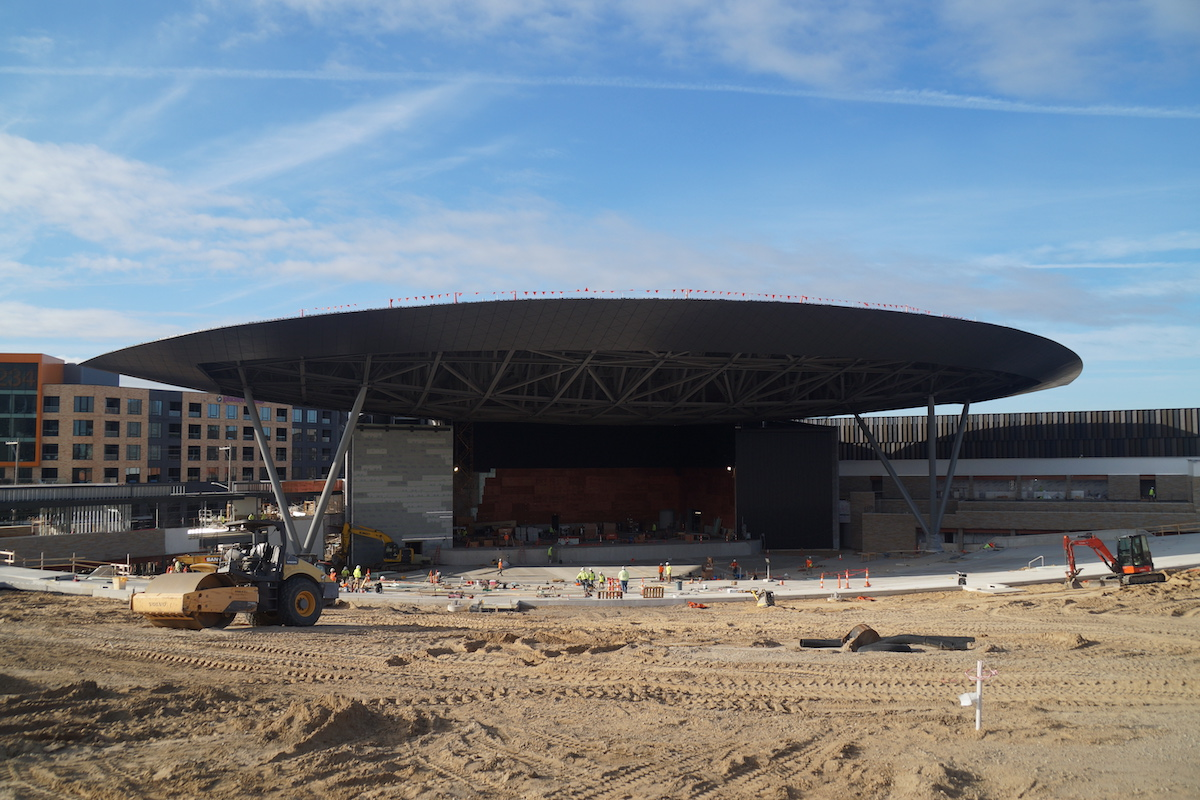“With the conclusion of the environmental clearance phase, we will continue moving forward on the I-375 project,” Whitmer said. “Since I took office, Michigan has fixed over 13,000 lane miles of road and over 900 bridges while supporting nearly 82,000 jobs. As we continue getting things done on the roads, however, we must take a closer look at the unjust legacy of so many of our freeways. This includes I-375, which paved through two prosperous Black neighborhoods decades ago, displacing 130,000 people, hundreds of small businesses, churches, and more. Now, we must build up our state’s infrastructure with equity at the core. While we cannot change the past, we must work harder to build a more just future, and that starts with listening to and engaging with the community, and taking deliberate steps to get this done right.”
“Reaching this milestone required an extensive amount of listening for many years,” said MDOT Director Paul C. Ajegba. “Working through issues and concerns raised by community members is key to any successful project. Clearing the environmental hurdle allows MDOT to proceed with further partnering opportunities throughout the design process.”
I-375 was built more than 50 years ago. During construction, prominent Black neighborhoods Black Bottom and Paradise Valley were demolished to make way for the freeway. Constructed through a thriving Hasting Street, the new I-375 opened in 1964 and created a barrier between the central business district in Detroit and the neighborhoods to the east, resulting in decades of under-investment and a lack of opportunity for the predominantly Black communities on the other side of the freeway.
Several blocks of commercial and residential buildings were also leveled to make way for the freeway and urban renewal. Although I-375 has a number of cross-bridges, many properties declined due to reduced connectivity and especially because the community's economic and residential base was substantially dislocated.

| Your local Deere & Co dealer |
|---|
| AIS Construction Equipment |
Today, almost three generations later, Michigan has an opportunity to eliminate this obstacle and provide easier access to better jobs, services, and quality of life to the residents of adjacent areas of persistent poverty. After nearly 60 years of use, I-375, the I-75/I-375 Interchange, and associated bridges are nearing the end of their useful service life and require modernization.
Extensive research was conducted starting in 2014 with a Planning and Environmental Linkage (PEL) study to identify and evaluate alternatives for the corridor that would meet the transportation needs of all users in a cost-effective manner and improve connectivity. The PEL determined that the transformation from a freeway to a boulevard was feasible. The conclusion of the PEL led to an Environmental Assessment (EA) study to document the human and natural impacts associated with any proposed improvements. Guided by the study’s purpose and need, as well as extensive public outreach, a preferred alternative was developed and presented at both a virtual meeting and an in-person public hearing in January 2021.
MDOT and the Federal Highway Administration (FHWA) have documented and thoroughly reviewed the public comments submitted in the FONSI, which is the final National Environmental Policy Act (NEPA) decision document and describes why the I-375 improvement project will not have any significant environmental impacts expected to occur upon implementation of the selected alternative design. NEPA is about people and places and balances engineering and transportation needs with social, economic, and natural environmental factors.
To address public comments, MDOT added measures to be taken that acknowledge the impacts on residents and business owners in the former Black Bottom and Paradise Valley neighborhoods. These measures include:
- Implementing a process for the community to provide meaningful input that can be incorporated into the final design. The process will begin with the formation of a new community-based local advisory committee.
- Preparing and implementing a community enhancement plan, land use framework plan, and aesthetic design guidelines with the new advisory committee.
- Using the value of the excess property to fund community priorities that will be identified during outreach efforts.
The selected alternative is a street-level boulevard that will begin south of the I-75 interchange and continue to the Detroit River (Atwater Street), effectively using the city grid to disperse and collect traffic and open additional connections to the riverfront, Eastern Market, and Brush Park, and create a new local connector street from Eastern Market to Gratiot Avenue. Improved non-motorized facilities include a two-way cycle track on the east side of the boulevard connecting the riverfront to the Montcalm Street extension and will extend west to Brush Street and east to Gratiot Avenue, where it will connect with the Dequindre Cut bicycle path.

| Your local Trimble Construction Division dealer |
|---|
| SITECH Michigan |


































































